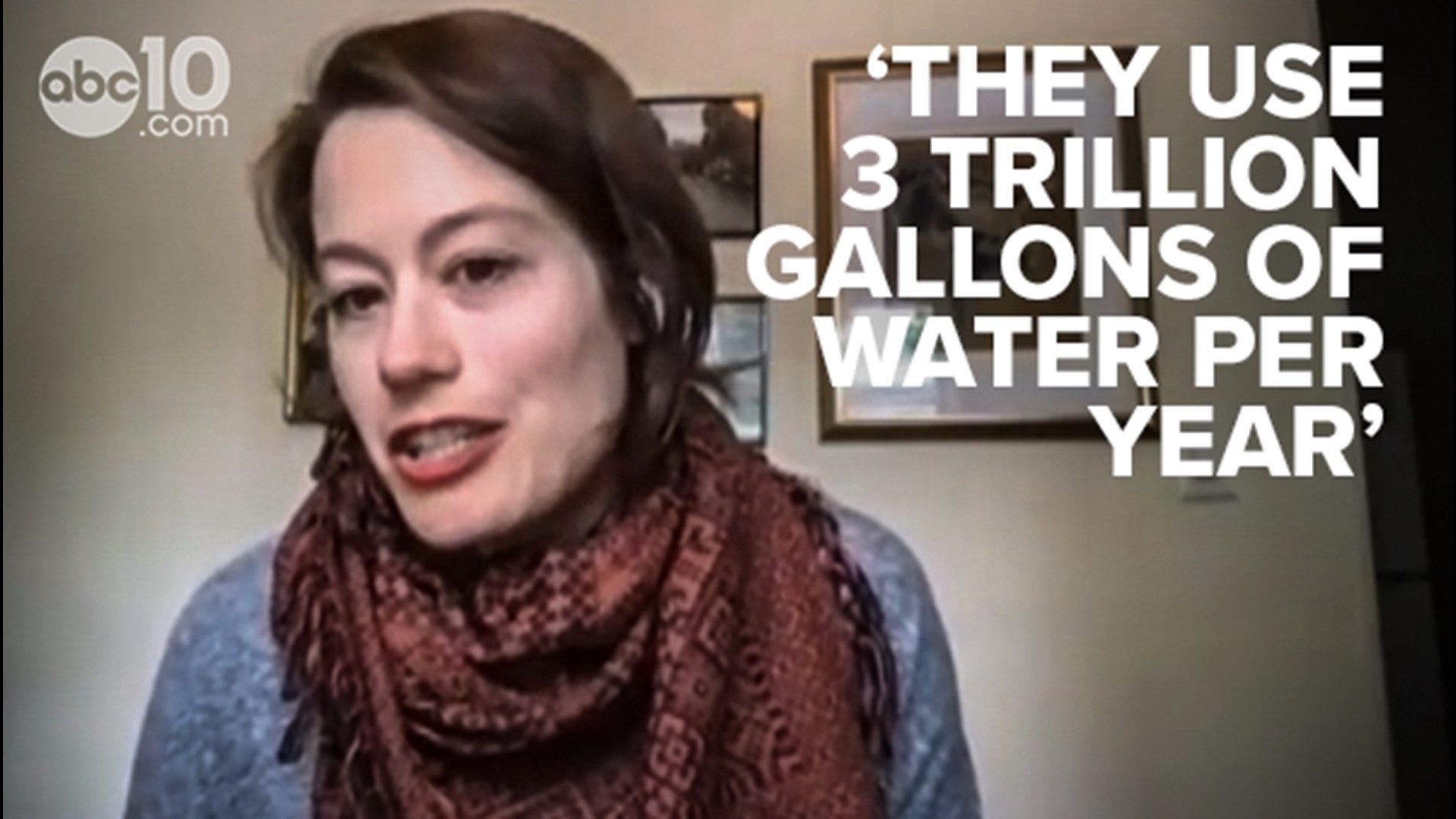SACRAMENTO COUNTY, Calif. — With California in a water crisis, Governor Gavin Newsom spent the afternoon Tuesday at a salination plant in Los Angeles stressing the need for conservation.
Despite calls from top leaders like Newsom, water consumption went up in March in urban areas.
“Compared to last year, we're slightly better," meteorologist Rob Carlmark said. "However, we're still not in great shape, not at all.”
Looking at the map from the U.S. drought monitor, red is the dominant color across the state.
“The big problem with this year is that we didn't get - barely - any storms, not only for Southern California but for Northern California, and that leaves the whole state in a drought,” Carlmark said.
The dry season is just getting started. Governor Newsom asked California households to reduce water usage by 15%, but the opposite happened. Compared to March last year, there was a 19% increase in water use.
Community Water Center (CWC), a nonprofit that works directly with small, rural communities of color to get clean drinking water, said the households they work with are already conserving as much water from their private wells as possible. It's the surrounding farms that they said are reducing the groundwater available to them.
“You can't just look at an individual and ask them to conserve, though that's certainly part of it," Kelsey Hinton, with CWC, said. "There are these bigger issues that we need to be addressing, like who is using most of the water?”
When it comes to figuring out where most of the water is being used, it depends on who is being asked.
50% of the state's water is dedicated to the environment. The Public Policy Institute of California said half of California’s environmental water use occurs in rivers along the state’s north coast. These waters are largely isolated from major agricultural and urban areas, and their wild and scenic status protects them from significant future development.
Of the other 50% that's allowed to be used, agriculture makes up 80% of that usage. More than 9 million acres of farmland in California are irrigated.
For those that need to compete with agriculture and deepen their well, the cost is not cheap.
“It's $30,000 minimum," Hinton said. "So we're talking about a car payment, house payments, something that nobody, especially if you're in a low income, rural setting, you don't necessarily have extra money.”
According to a map of wells in California, 188 reported drying up since March.
Hinton said that number could reach over 3,000 by the end of the year.
One solution her group is fighting for is Assembly Bill 2201. She said it would allow groundwater agencies to see who is applying for a well permit and how deep it is, so that they can assess how it will impact surrounding communities.
“Almond and alfalfa irrigation use about 3 trillion gallons of water per year,” Jessica Gable, with Food and Water Watch, said.
Food and Water Watch said the fastest solution is for California to transition away from producing thirsty, year-round crops. However, that would be an uphill battle. California's almond industry is worth billions.
Republican Assemblymember Devon Mathis said they are taking the wrong approach.
"Do you want your ag products being grown in another country? Yes or no? Do you want the same environmental standards, the same labor standards, the same protections that we put into our food that's grown here in the U.S.? Do you want to give that up to somebody else?" Mathis asked.
Reservoirs are a key solution. Voters approved spending money for them in 2014, but those projects are predicted to take another eight years before they are all complete.
Mathis argues if the state can build an arena in a year, they can build those reservoirs faster.
"We built the Golden One stadium next to the Capitol in less than a year," he said. "If you want to build something in California, you can turn it on and get it built."
WATCH ALSO:

















